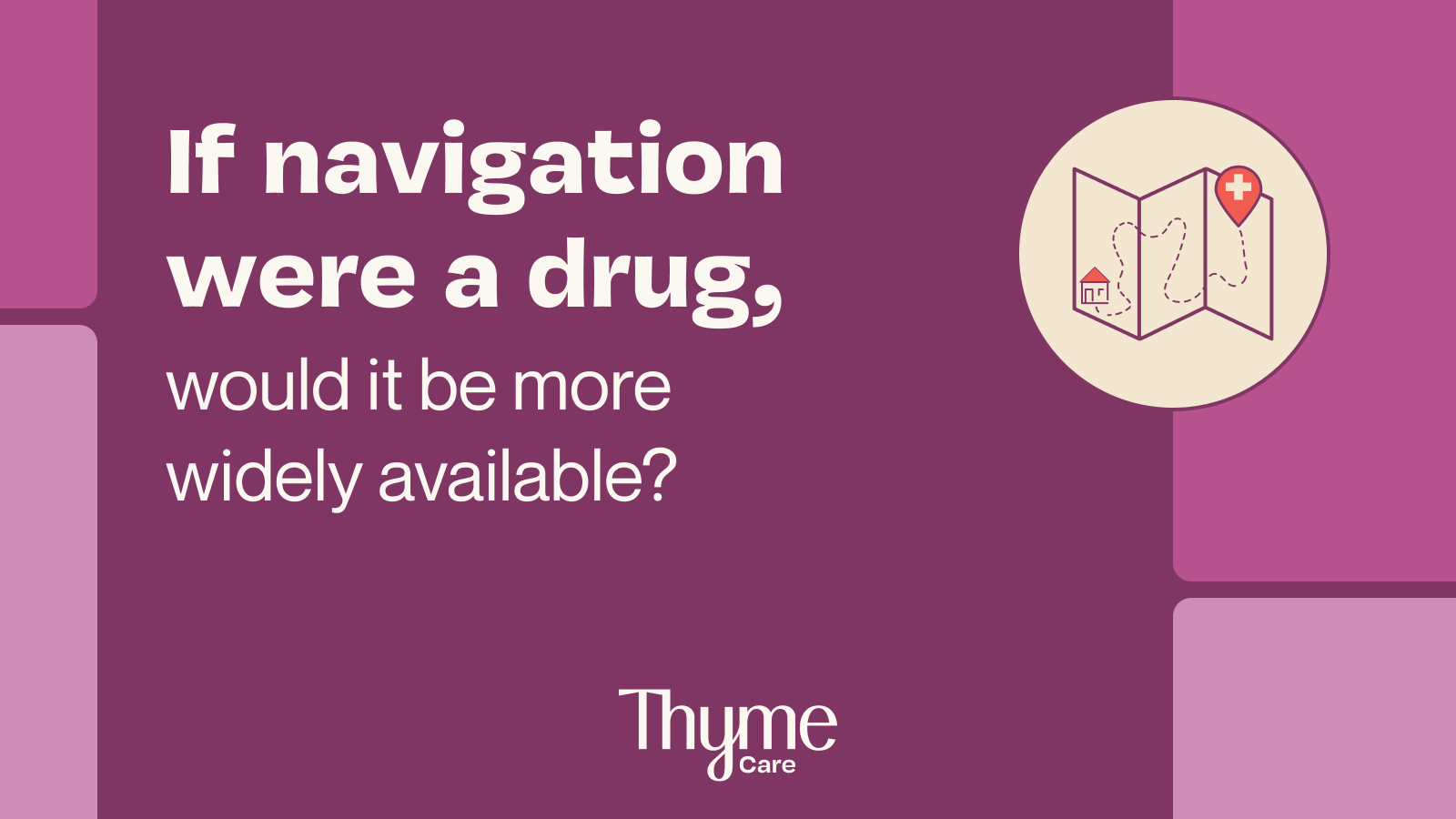If Navigation Were a Drug, Would it Be More Widely Available?
The oncology community is aligned that cancer navigation is a critically important tool to help improve outcomes for our patients. And yet few people have access. How do we do better?
This past April I was invited by my friend and colleague Dr. Stephen Schleicher to speak at AJMC’s Nashville Value-Based Medicine meeting to discuss the role cancer navigation plays in a post-OCM world.
I started by defining what I meant by cancer navigation. I like to use the term broadly. Navigation can include helping establish the first appointment with an oncologist, providing emotional support, ensuring goal-concordant care, electronic patient-reported outcomes (ePROs)—and everything in between.
The Impact of Cancer Navigation
On one of my first presentation slides, I displayed a handful of studies showcasing navigation’s impact on patient outcomes, experience, and total cost of care. The data are pretty impressive and I made the following point:
When new cancer therapeutics show outcomes similar to these studies, they get adapted quickly. The oncology community has appropriately built an infrastructure that makes sure patients have access to new therapies soon after the data tells us they work. But with navigation, it’s a different story.
Look at all of the promising data over the past several years: data from Dr. Manali Patel at Stanford, Dr. Gabrielle Rocque at the University of Alabama at Birmingham, Dr. Ethan Basch from Memorial Sloan Kettering Cancer Center, Dr. Debra Patt at Texas Oncology… the list goes on. And then ask whether the interventions that these groups have designed and shown to be effective are widely available in your community. The reality, sadly, is probably not.
In Chicago last month, I was excited to see Dr. Rocque’s ASCO 2022 abstract discussion, where she made the same point. While the uptake of new drug therapies is pretty fast in the United States, for navigation… not so much. As I sat in the ASCO audience, I looked around at my oncology colleagues nodding their heads, because we all know that navigation works.
We’ve seen the evidence showcasing increases in survival, reductions in hospitalizations and ICU admissions, and improved hospice utilization—overall improving the patient experience and decreasing unnecessary healthcare utilization. Just this month Dr. Patel had another study published, again making this point. And yet we all know that implementation of these interventions throughout our clinics—most of the time—isn’t feasible. As soon as we leave the conference, we don’t see the findings of these studies translated into practice, nor do we talk about the value of the interventions until the following year. Why?
The question and the answers are at the core of what we do at Thyme Care. So, why haven't these evidenced-based interventions received a greater uptake within oncology clinics?
Operationalizing at Scale is Hard
Cancer navigation is hard to scale and implement de novo. Doing it successfully involves the right combination of people, processes, and technology. Who are the right patients to interact with? How do you reach out to them? How do you match the right interventions to the right people? What is the right technology to use? How do you track and iterate on what you are doing?
When done well, technology, combined with people who know how to care for cancer patients allows teams to efficiently identify the right “dose” of care based on an individual's needs.
At Thyme Care, we do this through analysis of data from our health plan and provider partners, as well as real-time patient-reported data, and ingest that into our analytic platform to surface clinical and socio-economic insights. From there, we are able to efficiently identify risks for individual patients for potential harmful events. We use these analytics, which goes beyond risk predictions, to guide the best actions or interventions for our Care Team to facilitate what will change the outcomes for the patient.
Technology enables us to process thousands of data points and draw the connections for our Care Team, made up of Oncology Nurses and lay health workers (that we call Care Partners). This better enables them to virtually navigate our members, all while making sure that the clinical teams taking care of these patients get the information they need, without information overload.
The need to pair people with technology, what we frame as “technology-enabled navigation,” is why we recently brought on Brian Dorsey, MD to continue to build on and design our navigation interventions. He will be informing and prioritizing where technology can help our Care Team become more efficient, scalable, and add even more value to member and provider partners.

"We are working to build a solution that relies on people and technology to surface, prioritize and meaningfully address complex and intersecting needs. Other organizations have similar charges. But, I think we set ourselves apart by being able to do this with an efficiency that will allow us to scale. Our approach is twofold. First, our pattern of engagement with members is dynamic. When members are at their most vulnerable, we assume full responsibility for addressing their needs. As a member's condition stabilizes, we shift to shared responsibility and then ultimately member empowerment. Second, our interventions are tailored to the intensity and impact-ability of the need. We provide the right dose of navigation support at the right time."
Effective Navigation Requires Significant Investment
While the Oncology Care Model (OCM) didn’t necessarily solve the problem of making navigation easy to implement, it did create a financial framework to help fund it. But with OCM sunsetting and a gap year until the new Enhancing Oncology Model (EOM) starts, there is uncertainty. Even though OCM created a lot of excitement in the value-based world, at the end of the day the engagement of commercial health plans was minimal.
We do not believe sustainable solutions that drive value for our patients are feasible without building models that align the financial incentives of clinicians with those of the health plans. If these interventions improve the quality of care and drive financial value to the health plan, it seems obvious that health plans should be willing to pay for this.
Leveraging our relationships with both providers and health plans, as well as our direct touch points with patients, we are fortunate enough to be able to align the incentives of these key stakeholders and have built a model where health plans are willing to invest in navigation. We’ve built the analytic platform to enable us to demonstrate ROI to health plans, to take risk, and to drive value to our provider partners—all while helping them deliver higher-value care to their patients.
The Future Of Patient Care
Across the cancer journey, from early diagnosis to management of symptoms, to therapy selection, to survivorship, to ensuring appropriate care at the end of life, there are choices and decisions that can drive higher quality care and lower the cost of care. But our standard fee-for-service framework doesn’t encourage this.
We are excited to be able to play a role in helping to change that equation, to change that framework by partnering with health plans and providers who know this is the future. More announcements to come on this very soon. And with that in mind, I’m hopeful that at an ASCO some time in the not too distant future, the focus can be solely on all of the great, new patient-centric innovations being developed, and not why deploying them is such a challenge.
To learn more, visit thymecare.com/health-plans


